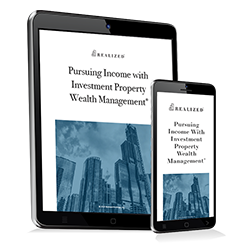
Most of us are familiar with qualified retirement plans -- they are employer-sponsored 401(k), 403(b), and profit-sharing plans that meet guidelines set forth in the Employee Retirement Income Security Act (ERISA) of 1974.
Qualified plans enjoy attractive tax benefits that make them appealing for millions of American workers. Companies also prefer them because they receive tax breaks for contributions made on behalf of their employees. Many employers also offer non-qualified retirement plans, though, especially to attract and retain high-ranking corporate executives and top-flight creative talent.
In this article we’ll cover the basics of non-qualified retirement plans, their benefits and drawbacks, and why they are used as an executive retirement tool.
Benefits of Non-Qualified Retirement Plans
Non-qualified retirement plans aren’t subject to the same strict rules as qualified plans. One of the main differences between the two is contribution limits.
Contributions to qualified 401(k) and 403(b) plans are capped at $19,500 in 2021, the same as 2020. Employees ages 50 and older also can contribute an additional $6,500 in “catch-up” contributions. Non-qualified plans, meanwhile, aren’t subject to any contribution limits -- employees can contribute as much as they want.
These plans are appealing to highly compensated corporate executives and similar types of employees because they allow them to save substantial amounts of their pay, bonuses, and other compensation to use in retirement or at a predetermined time, such as in five or 10 years. Although employees still must pay Medicare and Social Security taxes on deferred income contributions, they don’t have to pay federal or state tax until the funds are paid out. Their deferred compensation has the ability to grow tax-free until it is dispersed. If it’s taken out in retirement, these highly compensated employees might be in lower tax brackets than when they were working.
These plans also aren’t subject to mandatory distribution requirements like 401(k)s, although some non-qualified plans may have stipulations that dictate distribution timelines.
Drawbacks of Non-Qualified Retirement Plans
Risk is perhaps the biggest drawback for employees who contribute to non-qualified retirement plans. Contributions to qualified retirement plans are held in segregated trust accounts that enjoy full protection from bankruptcy and creditors.
Non-qualified plans, however, are typically an unfunded agreement between the company and employee that deferred compensation will be paid out at a later date. If the company goes bust, employees might not receive the promised compensation. Oftentimes, employers form trusts to hold non-qualified plan assets, which affords employees protection from this scenario.
Another potential pitfall is that employees cannot take out a loan or access these funds under any circumstances prior to the predetermined distribution date. Lastly, if you depart the company you can’t roll these funds over into an IRA or 401(k).
The Bottom Line
For many high earners, 401(k) plans are inadequate because contribution limits are well below their ability and desire to create a comfortable financial cushion for use in retirement.
Companies use non-qualified retirement plans as a recruitment and retention tool for these employees because they allow them to defer compensation that exceeds limits for the general employee base.
Employees should pay particular heed to the structure of non-qualified plans to ensure they meet their needs and expectations for retirement planning.
This material is for general information and educational purposes only. Information is based on data gathered from what we believe are reliable sources. It is not guaranteed as to accuracy, does not purport to be complete and is not intended to be used as a primary basis for investment decisions. It should also not be construed as advice meeting the particular investment needs of any investor. Consult with your tax advisor regarding your individual circumstances.
The actual amount and timing of distributions paid by programs is not guaranteed and may vary. There is no guarantee that investors will receive distributions or a return of their capital. These programs can give no assurance that it will be able to pay or maintain distributions, or that distributions will increase over time.



